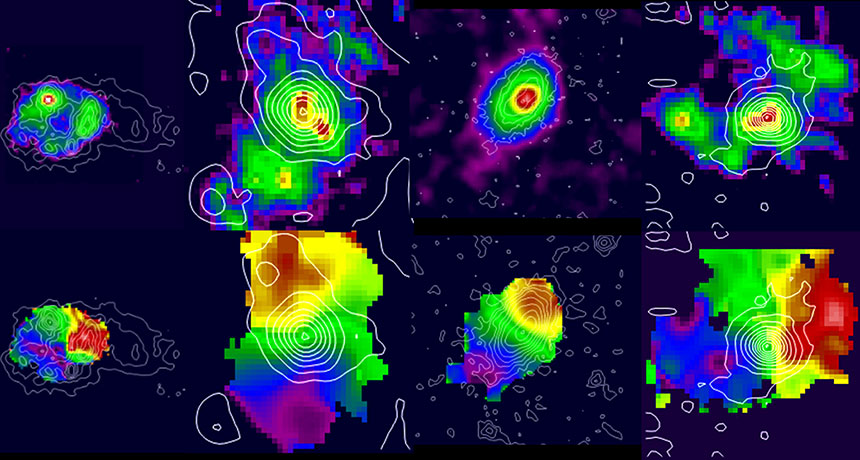
SLUGGISH STARS A hydrogen signature reveals the structure of six galaxies (top, bright regions appear red) observed with the Very Large Telescope in Chile. The signature also shows the velocities (bottom) of stars in the galaxies (blue regions are moving toward the telescope; red areas, away). Stars farther from the galactic center unexpectedly appear to move more slowly than stars closer in.
© MPE







